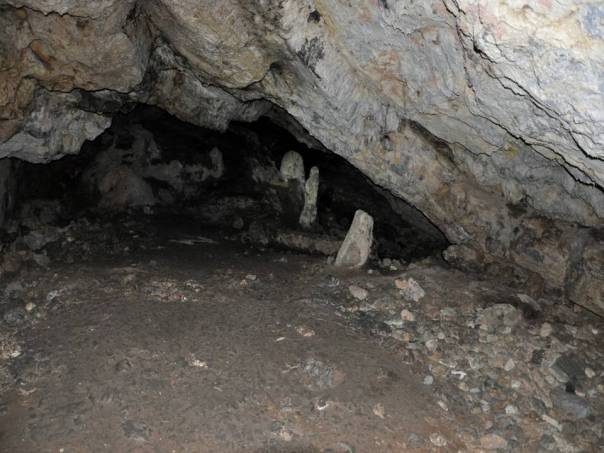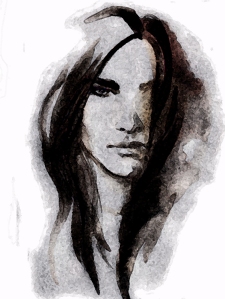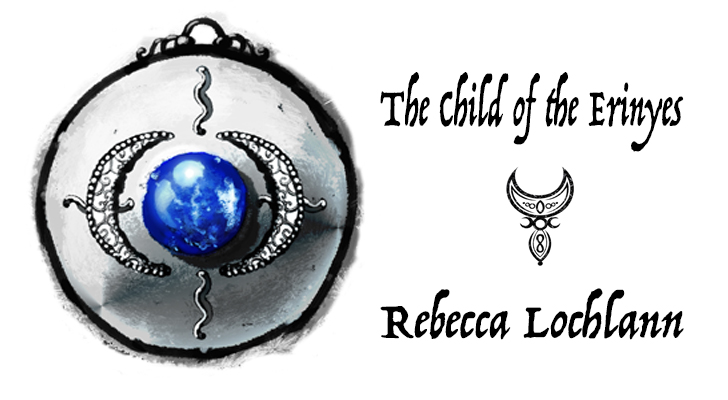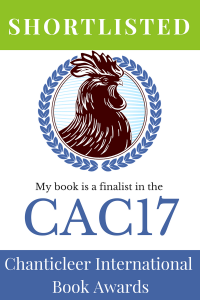Monthly Archives: October 2011
The cabal
These days, the definition of “cabal” is:
1. The artifices and intrigues of a group of persons secretly united in a plot (as to overturn a government); also, a group engaged in such artifices and intrigues.
Merriam Webster gives these examples:
1. a cabal plotting to overthrow the government.
2. a conspiracy theory about the existence of an international cabal devoted to world domination.
I thought it would be interesting to have “cabal” in the Bronze Age Mediterranean mean something else, very different yet somehow linked to its modern-day definition.
In The Greek Myths, Robert Graves has these things to say. He uses the word tanist the same way I use “cabal.”
“Once the relevance of coition to child-bearing had been officially admitted, man’s religious status gradually improved, and winds or rivers were no longer given credit for impregnating women. The tribal Nymph, it seems, chose an annual lover from her entourage of young men, a king to be sacrificed when the year ended; making him a symbol of fertility, rather than the object of her erotic pleasure. His sprinkled blood served to fructify trees, crops and flocks, and his flesh was torn and eaten raw by the Queen’s fellow-nymphs – priestesses wearing the masks of bitches, mares, or sows. Next, in amendment to this practice, the king died as soon as the power of the sun, with which he was identified, began to decline in the summer; and another young man, his twin, or supposed twin – a convenient ancient Irish term is ‘tanist’ – then became the Queen’s lover, to be duly sacrificed at midwinter and, as a reward, reincarnated in an oracular serpent.
When the shortness of the king’s reign proved irksome, it was agreed to prolong the thirteen month year to a Great Year of one hundred lunations, in the last of which occurs a near-coincidence of solar and lunar time. But since the fields and crops still needed to be fructified, the king agreed to suffer an annual mock death and yield his sovereignty for one day – the intercalated one, lying outside the sacred sidereal year – to the surrogate boy-king, or interrex, who died at its close, and whose blood was used for the sprinkling ceremony. Now the sacred king either reigned for the entire period of a Great Year, with a tanist as his lieutenant; or the two reigned for alternate years; or the Queen let them divide the queendom into halves and reign concurrently.
The title Hecate (one hundred) apparently refers to the hundred lunar months of the king’s reign, and to the hundredfold harvest. The king’s death by a thunderbolt, or by the teeth of horses, or at the hands of his tanist, was his common fate in primitive Greece.
The twins’ mutual murder recalls the eternal rivalry for the love of the White Goddess between the sacred king and his tanist, who alternately meet death at each other’s hands.
The column, on which the Death-in-Life Goddess perches, marks the height of summer when the sacred king’s reign ends and the tanist’s begins. (At the heliacal rising of two-headed Sirius.)
This combat is mythologically recorded in the story that the Olympic Games began with a wrestling match between Zeus and Cronus for the possession of Elis, namely the midsummer combat between the king and his tanist; and the result was a foregone conclusion – the tanist came armed with a spear.
The historical setting of the Scylla myth is apparently a dispute between the Athenians and their Cretan overlords not long before the sack of Cnossus in 1400 BC. The myth itself, almost exactly repeated in the Taphian story of Pterelaus and Comaetho, recalls those of Samson and Delilah in Philistia; Curoi, Blathnat, and Cuchulain in Ireland; Llew Llaw, Blodeuwedd, and Gronw in Wales: all variations on a single pattern. It concerns the rivalry between the sacred king and his tanist for the favor of the Moon-goddess who, at midsummer, cuts off the king’s hair and betrays him. The king’s strength resides in his hair, because he represents the Sun; and his long yellow locks are compared to its rays.
In The Year-god’s Daughter, The Thinara King, and In the Moon of Asterion, the sacred king has a tanist, but I didn’t want to use that term. In my timeline, the word is “cabal.” At Mycenae, it simply means “brother,” but on Crete, the word “cabal” has twin meanings: brother and killer. The cabal is the king’s “tanist,” or symbolic “brother,” who also kills him, thus turning him into a god.
In the course of the series, the word “cabal” gradually and eventually transforms into its modern definition, which plays a part in the story.
The sacred cave
In The Year-god’s Daughter, Aridela, Selene and Iphiboë sneak out of the palace to meet their fates. They travel by cart to Skotino Cave, which even these days attracts large numbers of tourists. It lies some distance to the east of Knossos.
Of course, in the Bronze Age, this cave would have had another name. I chose for my story The Cave of Velchanos.
Within the walls of Skotino, Aridela’s life forever changed.

Another sacred cave on Crete, Eileithyia [File:Cave of Eilithia.jpg|thumb|Cave of Eilithia]] https://commons.wikimedia.org/wiki/File:Cave_of_Eilithia.jpg
Minos
Minos is a well known title, accepted across the world as the name of a dynasty of kings on Crete. But Robert Graves translates the word “minos” as “Moon-Being,” which suggests it is feminine. Here’s what Graves says in The Greek Myths:
“Minos was a royal title of an Hellenic dynasty which rules Crete in the second millennium, each king ritually marrying the Moon-priestess of Cnossus and taking his title of ‘Moon-being’ from her.” ‘Hellenic’ suggests the term ‘Minos’ relating to a ‘king,’ did not come about until the Hellenic era. It also suggests very strongly that the title belonged to a woman.
Here are several more of his quotes:

(c) Manchester City Galleries; Supplied by The Public Catalogue Foundation https://commons.wikimedia.org/wiki/File:Edward_John_Poynter_-_The_Vision_of_Endymion,_1902.jpg
“The triumph of Minos, son of Zeus, over his brothers refers to the Dorians’ eventual mastery of Crete, but it was Poseidon to whom Minos sacrificed the bull, which again suggests that the earlier holders of the title ‘Minos’ were Aeolians. Crete had for centuries been a very rich country and in the late eighth century BC was shared between the Achaeans, Dorians, Pelasgians, Cydonians (Aeolians) and in the far west of the island ‘true Cretans’.” This line also suggests that the male “Minos” won the title at a later date.
“Pasiphae and Amphitrite are the same Moon-and-Sea-goddess, and Minos, as the ruler of the Mediterranean, became identified with Poseidon.” Again, the suggestion is that Minos is a later invention, perhaps after an overthrow.
“Zagreus: this myth concerns the annual sacrifice of a boy which took place in ancient Crete: a surrogate for Minos the Bull-king. He reigned for a single day, went through a dance illustrative of the five seasons – lion, goat, horse, serpent, and bull-calf – and was then eaten raw.” The holy Day out of Time, which plays an important role in my books.
Graves also says that “Two or three Minos dynasties may have successively reigned in Cnossus.”
In my story, “Minos” is the title of the High Priestess and holy oracle, Themiste. Minos is a secret title, known only to those initiated into the Cretan Mysteries.
Jacquetta Hawkes theorizes about Crete’s ruling house BEFORE the familiar “King Minos” in Dawn of the Gods:
“In the scenes from the seal-stones, not only is the Goddess always the central figure, being served and honoured in a variety of ways; she is sometimes shown seated on a throne. Supposing that a king did rule as consort of the Goddess, one would expect at the very least that at the royal court, which elsewhere, in Egypt and the Orient, was seen as the human reflection of the divine order, there would have been a throne for the queen as the counterpart of the Goddess. Yet in the sacred throne room at Knossos, and apparently also in the state apartment in the residential quarter, the throne stood single and alone.
If it were not for the tradition of King Minos, and the corresponding absence of any recorded memories of Cretan queens, and perhaps also certain strong if unconscious assumptions among Classical scholars, it seems that the archaeological evidence would have been read as favoring a woman on the ritual throne at Knossos.”
She also says: “In addition to these characteristics, there was another which much more strongly implies the self-confidence of women and therefore their secure position in society. This is the fearless and natural emphasis on sexual life that ran through all religious expression and was made obvious in the provocative dress of both sexes and their easy mingling.”
Velchanos, the son-lover
Velchanos was apparently well-known on Crete but didn’t make a big splash on the mainland (another god who was absorbed by Zeus) and has been largely forgotten in the annals of time. I extrapolated from what I could find in the existing myths, and merged in some African myths, which is where I believe Athene originated. I wanted Crete to have an African flavor to its religion. Remember: Athene is universally accepted as being “Un-Greek,” (and pre-Greek pantheon) and is thought to have come from “Libya,” which is the name given by the ancients to the whole of (the then explored) Africa. Since nobody really knows what the Cretans believed or how they operated, I felt I had some freedom.

image: Anna Ismagilova Shutterstock
Here’s what Rodney Castleden says in Minoans: Life in Bronze Age Crete:
“Since the goddess herself was not permitted to die, the annual death and rebirth were acted out by a young male Year-spirit, a small and inferior deity who took the roles of son and consort, and represented the important principle of discontinuity in nature. In the Minoan period he remained important; his original Minoan name, Velchanos, seems to have endured into the classical period as one of the titles attributed to Zeus on Crete. Zeus Velchanos was also known on Crete as ‘Kouros’, ‘The Boy’. Velchanos was always subject to the goddess and always shown in attitudes of adoration. The two ivory ‘Divine Boy’ figurines described by Evans as probably having come from the Labyrinth, may well be representations of Velchanos before and after puberty.”
“Often Minoan worshippers tore branches or boughs from a sacred tree and venerated them on altars or planted them in the sockets between sacral horns. Sometimes, they built shrines round sacred trees, apparently providing access to them by means of double doors and safeguarding them by means of wooden fences or stone walls. In some ceremonies, an attendant, often male, tore a bough from the shrine-tree to the accompaniment of gestures of lamentation from the priestess and others present; this overwrought scene, shown on several rings, seems to have symbolized the death of the young god and may conceivably have been followed by the sacrifice of the male attendant who represented him.”
Rodney Castleden gives more attention to Velchanos in his book, The Knossos Labyrinth: A New View of the ‘Palace of Minos’ at Knossos.
He talks about a few of the goddesses worshiped on Crete in Chapter 9 “The Lady of the Labyrinth,” and goes on to say: “Another was a Goddess of Renewal and she was connected with the central rites of the vegetation cycle. Often the annual death and rebirth were acted out by a young male deity, a Year-spirit who took the roles of both son and consort. This small but heroic figure who died and was born again every year, just like Adonis, seems to have been the prototype for Zeus, although in the Minoan period he was subordinate to the goddess whom he served. The cult surrounding this proto-Zeus continued after the Minoan civilization came to an end and it seems that his original Minoan name survived in one of the titles attached to Zeus on Crete–Velchanos.
The Greek Myths, (Robert Graves) contains probably the most well-known description of Velchanos. He translates the meaning of Velchanos as “the king who drags his foot.”
“Hephaestus is sometimes described as Hera’s son by Talos (see 12.c), and Talos as Daedalus’s young nephew; but Daedalus was a junior member of the House of Erechtheus, which was founded long after the birth of Hephaestus. Such chronological discrepancies are the rule in mythology. Daedalus (“bright” or “cunningly wrought”), Talos (“sufferer”), and Hephaestus (“he who shines by day”), are shown by the similarity of their attributes to be merely different titles of the same mythical character; Icarus (from io-carios, ‘dedicated to the Moon-goddess Car’) may be yet another of his titles. For Hephaestus the smith-god married Aphrodite, to whom the partridge was sacred; the sister of Daedalus the smith was called Perdix (‘partridge’); the soul of Talos the smith flew off as a partridge; a partridge appeared at the burial of Daedalus’s son Icarus. Besides, Hephaestus was flung from Olympus; Talos was flung from the Acropolis. Hephaestus hobbled when he walked; one of Talos’s names was Tantalus (‘hobbling, or lurching’); a cock-partridge hobbles in his love-dance, holding one heel ready to strike at rivals. Moreover, the Latin god Vulcan hobbled. His cult had been introduced from Crete, where he was called Velchanos and had a cock for his emblem, because the cock crows at dawn and was therefore appropriate to a Sun-hero. But the cock did not reach Crete until the sixth century B.C., and is likely to have displaced the partridge as Velchanos’s bird.
Zagreus
In my series, the title given to the bull-god, the sacred king. He was, as far as I can tell, the precursor to Zeus, although later myths say he was the son of Zeus.
Carl Kerényi has a whole chapter on Zagreus in Dionysos, Archetypal Image of Indestructible Life, which of course I won’t repeat in its entirety here. The highlights:
page 113: “The Cretans of the Greek period spoke of a Zeus of their own, stressing the Cretan mythologem of his birth by the use of the epithet “Kretogenes,” “he who was born in Crete.” By this they meant the god born in a Cretan setting that included the cave. If we drop the Greek names “Zeus” and “Dionysos,” there remains the great anonymous snake god who, according to the late testimony of Himerios, held his marriage “in Cretan caves.”
“Less archaic than the seduction by a snake was the universally known myth of the rape of Persephone. “Hades,” “Plouton,” or the “subterranean Zeus” were only cover names for the ravisher. Fundamentally he too was a great anonymous god. To the version in which the scene of the rape was Sicily, Nonnos in his Dionysiaka appended an account of the snake marriage. Demeter leaves Crete with her virgin daughter Persephone and hides her in a cave near the spring of Kyane. Thither comes Zeus, the bridegroom in the form of a snake:
…through marriage with this heavenly dragon
Persephone’s womb became fruitful, prepared
To give birth to Zagreus, the horned infant.
Aischylos bears witness to the contradictory identity of Zagreus, on the one hand with a “subterranean Zeus,” on the other with his subterranean son. “Zagreus,” “he who captures alive,” was also a cover name, a circumlocution for a great god, in fact the greatest god of all time. He visits his hidden daughter in a cave, and she bears him to himself as his own son. The “mystic” feature which we have presupposed in the relationship between Dionysos and Ariadne here appears in an archaic myth in which generation and birth never go beyond the same couple. Taking his mother or daughter to wife, the son or husband begets a mystic child who in turn will court only his mother. To such involvements the snake figure is more appropriate than any other. It is the most naked form of zoë absolutely reduced to itself”
Later in the book, Carl observes: “It is certain that if Pentheus, a transparent and unequivocal name with the somber meaning “man of suffering,” could become a man’s name at Knossos it was only because the names of gods–“Zagreus” as well as “Pentheus”–were also given to persons and because int he fesstive calendar the god’s somber aspect prepared the way for the opposite aspect.”
Robert Graves says on page 110 in The Greek Myths:
“Because the vine cult reached Greece and the Aegean by way of Crete–oinos, ‘wine’, is a Cretan word–Dionysus has been confused with Cretan Zagreus, who was similarly torn to pieces at birth.”
A Few Right-Thinking Men: Sulari Gentill
I was given this book as a gift; I have no working knowledge of Australian history, so I felt a little intimidated, but that disappeared as soon as I read, “Rowland wiped his hands on his waistcoat. Not so many months ago, it had been a quality item of gentleman’s attire. Now, it was stained with paint and smelled of turpentine. Rowland preferred it that way. He looked again at the painting with which he had battled all day and which, in the end, had defeated him.”
This is Rowland Sinclair, a young, compelling man possessing eyes of intense blue, incredibly generous and friendly, open-minded, casual, a committed artist, who yearns for the love of the bohemian sculptress, Edna, but keeps his mouth shut about it. He’s thrown open his house to Edna and other artists who have fallen on hard times during the 30s Depression, for his family comes from wealth and status. Rowland, the embarrassment of his right-thinking brother, lives life as he wants to live it, rather than obeying the rules attached to the higher classes. He doesn’t realize until he’s fallen deep into the pit how history will affect him personally, will drag him into the thick of things, although his only desire is to live life in peace and acceptance of others, whatever their beliefs.
It all begins when his friend, Milton, drags him to a Communist meeting. From there the reader is pulled into history with Rowland; we delve into the New Guard, a fascist group run by the historical figure, Eric Campbell, who, along with his compatriots, want to turn Australia into a fascist state. Then there’s the Old Guard, the original group from which Campbell split, the group loyal to King and Country, Traditionalists all.
Against the backdrop of this history, (impeccably researched) we flow along with Rowland and his friends as they try to get to the bottom of a brutal murder, and end up discovering more than they ever dreamed of. Their very lives fall into jeopardy as the politics of the times overtakes and surrounds them.
One of the highlights for me was the wit, the humor, and the dialogue between these characters. This is all masterful, and I was guffawing even in the midst of a grim reality that could have ultimately changed Australia from the lovable place we know (albeit filled with the world’s most poisonous snakes and spiders, not to mention crocs and jellyfish) to a place of dictatorship. Thank God that didn’t happen!
Quotes: “You don’t need to worry about my discretion, Wil,” Rowland said angrily. “I’m not about to tell anyone that my brother is raising some clandestine, tweed-jacketed army because he thinks Stalin is heading south!”
“Ernest nodded solemnly. “Are you going to see the King?”
“Shall I give him your regards?”
“Don’t be silly, Uncle Rowly, King George has his own guards…with big furry black hats.”
“Civil war! Who would…” Milton clapped his hand on his forehead in realisation. “Bloody Catholics! I knew the Tykes were planning something…all that bloody Hail Marying!”
Clyde, who was a Catholic of sorts, clipped the side of Milton’s head as he got up to refill his glass.
As far as the romance between Rowland and Edna…well, I’ll let the reader discover that for him or herself. A Few Right Thinking Men could have been a dark account, almost a documentary, one event leading into the next. But the addition of Rowly, Wilfred, Ernest, Kate, Edna, Clyde and especially Milt (I love him) and their enduring friendship, the barely contained romance (which is masterfully done,) draws one in and makes this a story where the reader is completely invested in the lives, emotions, and outcomes of these people. From the first page to the last, everything flows, woven perfectly, so that we see the big picture of Australian politics in the 30s along with the microcosm of Rowland’s life, friendships and family.
A Few Right Thinking Men merely introduces Rowland and his friends. Rowland’s adventures, I’m happy to report, will continue on in future books.
To purchase from Amazon click here.
The Crown in the Heather: N. Gemini Sasson
 “Each night when I lie down, bathed in the rank sweat of a day’s pressed march, I am so weary I neither stir nor dream in my sleep. For weeks, I have felt neither the cushion of a pillow beneath my cheek, nor the caress of a blanket upon my shoulders.”
“Each night when I lie down, bathed in the rank sweat of a day’s pressed march, I am so weary I neither stir nor dream in my sleep. For weeks, I have felt neither the cushion of a pillow beneath my cheek, nor the caress of a blanket upon my shoulders.”
This is how The Crown in the Heather begins, with engrossing imagery and immediate sympathy. And for me, it never let up. With each chapter, I not only learned more of this era of Scottish history, one in which I am most interested, but I grew to know the characters intimately, to feel their loves, their pains, their doubts, their fears, their horror, their resolve.
Using the “observer-narrator” viewpoint in several chapters, the author masterfully deepened not only the viewpoint character but the others as well, the ones being observed. One of my favorite lines in the entire book, in James Douglas’s viewpoint, is of Robert:
“For weeks now, Robert had waited for them to come. Day after day, rising before dawn, he climbed to the same high hill and watched from his rocky eyrie. Every evening the same again. But day after day went by and nothing. No one. He did not pace or fret or fray away with worry. He simply waited. His eyes as hard and fixed as chips of stone, gazing above the treetops, surveying along the river’s course.”
And also in James’s viewpoint, told as he watches the reunion of Robert with his beloved Elizabeth, James, who has fallen in love with her himself, observes: “As he reached her, Robert sprang from his horse and wrapped her in the circle of his strong arms like a giant cupping a dove between the palms of his hands–gently and fiercely all in one.”
The author also brings to life the character of Prince Edward, Longshanks’ son. I never really thought much about this boy before reading this book, but Sasson brings him to clear-cut, fleshed-out life. Insightful–no, inspired writing delves deep into this abused young man.
Beautiful and evocative, this book was no dry account of an event in history. It brought to magnificent life the people who lived, died and endured the awful rape of their country and tradition, and their determination, in the face of terrible odds, to fight back, to free themselves, to rule themselves, no matter the cost.
I think one of the reasons so many people across the world are so in love with Scotland is because of its rich history, the stunning beauty of its country (which Sasson describes with great skill) and the way the people, in dire straits for so much of the time, continued to soldier on with ramrod spines: the Scots never relent. They never give up. They never surrender. We can’t help but love that sort of courage. All of this comes through clearly in The Crown in the Heather.
I also want to compliment the author for clearly delineating the order of the books. I hate it when I buy a new book, not knowing much about it, only to discover at the end that I’ve just read the third book in a trilogy or something. No wonder I was so confused! And now it’s too late to go back and begin at the beginning. I much prefer a trilogy or series to be clearly indicated, and to know which book in the series I’m reading.
To purchase from Amazon click here.
To purchase from Smashwords click here.
The Crimson Bed: Loretta Proctor
I found myself abandoning TV and other distractions in order to spend more time in the sometimes-sad, sometimes-funny, always absorbing world created by Loretta Proctor, author of “The Crimson Bed.”
The reader is carried into the movement of the Pre-Raphaelites, those famed Victorian artists, through wanna-be Henry Winstone and his rich patron-friend, Frederic Ashton Thorpe. Henry is thrilled to acquire a coveted commission: he is to paint the daughter of wealthy Joshua Farnham. Not only does this bring him needed cash, it also provides him with a lovely subject in young Ellie. When Frederic Thorpe sees the work in progress, he falls in love and will not rest until he’s wrangled an introduction through Henry. The rest is history.
Ellie and Frederic’s marriage is destined to suffer challenges, as both possess embarrassing secrets neither wants the other to know. These secrets eventually erode the relationship, aided by Frederic’s rather vicious-minded mother.
The author’s knowledge of this period in history and artists, both real and imagined, is impressive, as is her understanding of the artistic techniques used by the Pre-Raphaelites. I admired her ability to create a real, vibrant, colorful Victorian world. If you like E.M. Forster, Edith Wharton, or Jane Austen, you will probably enjoy “The Crimson Bed” very much, but in one aspect this book is different. The author doesn’t shy away from or gloss over the earthy aspects (the hypocritical underbelly) of life in Queen Victoria’s London. As far as accuracy goes, this book never disappoints, yet happily never bogs down into preaching, explanation or endless description. Unlike many modern books and movies that give action and plot their entire attention and neglect to flesh out the characters, “The Crimson Bed” fulfills all three requirements.
This book is many things: a romance, a historical, a character study. It is also a subtle yet unvarnished look at Victorian mores, beliefs, fears and hypocrisies; this exploration makes “The Crimson Bed” a work that resonates into our modern times. Its protagonists are realistic, flawed, alternately good and selfish, nice and mean-spirited. Ellie, Frederic, Henry, Alfie and the others are a slice of real humanity well worth getting to know.
To purchase from The Book Depository: click here.
To purchase Kindle or paperback formats from Amazon UK: click here.
The Iron Admiral: Conspiracy: Greta van der Rol
I didn’t know before I began that Conspiracy was not complete unto itself but was actually Book One. I read, fully expecting there to be resolution at the end, and when I came to the last page, I was yelling “NOOOOOOOO!” which the author probably heard in Australia.
Anyway, I am now salivating for book two.
I liked Allysha a lot. She’s very well fleshed out and likeable. I rooted for her all the way through, and I understood completely how she got herself into the mess with Sean. I been there, sista! But I fell for the Iron Admiral myself, I must confess. He’s very delicious. How she can resist him, I don’t know. She has far more willpower than I.
Another thing I really liked about this book is how the author doesn’t over explain anything. Either you get it, or you don’t, but it doesn’t really matter. If you don’t understand things like space travel and info droids, that’s okay. She doesn’t go into long info blocks describing what these things are and how they work. You, the reader, just gradually pick it up as you read. I LOVE that.
The second book, Deception has now been released. I’m happy to report it’s every bit as good as Book One. Maybe better.

















